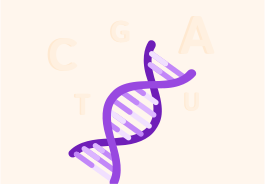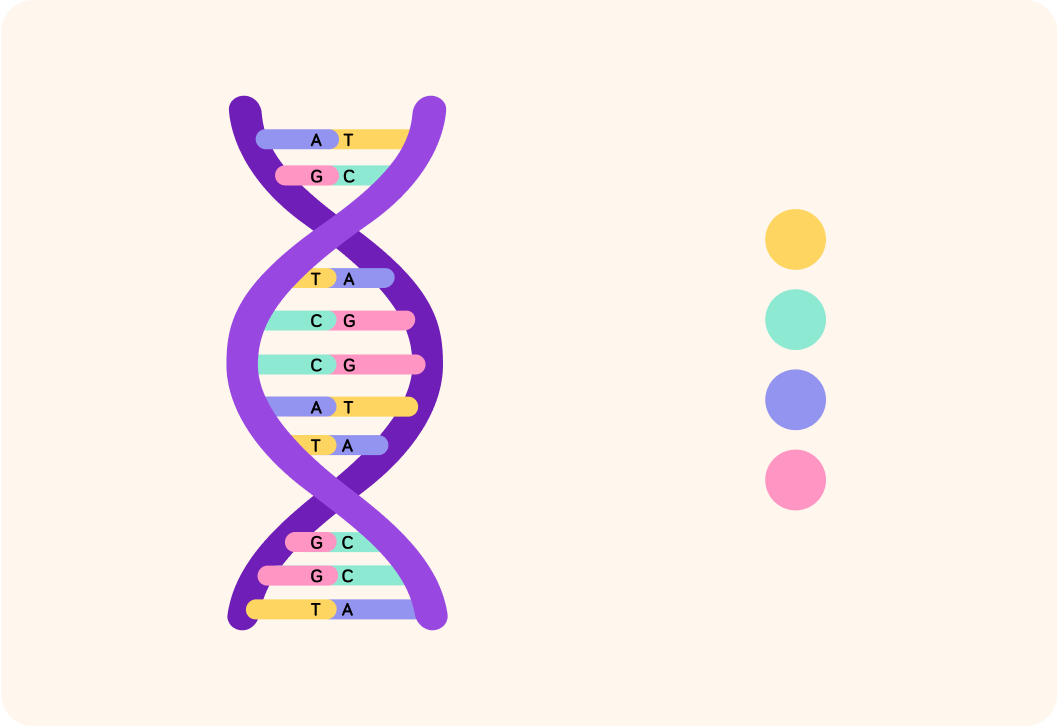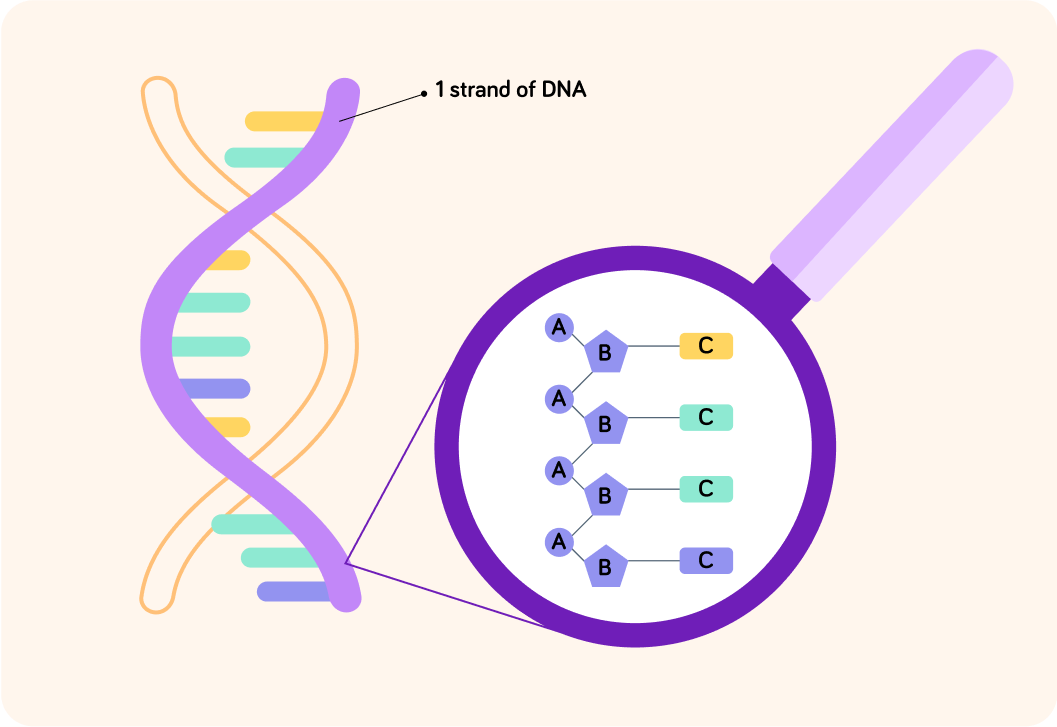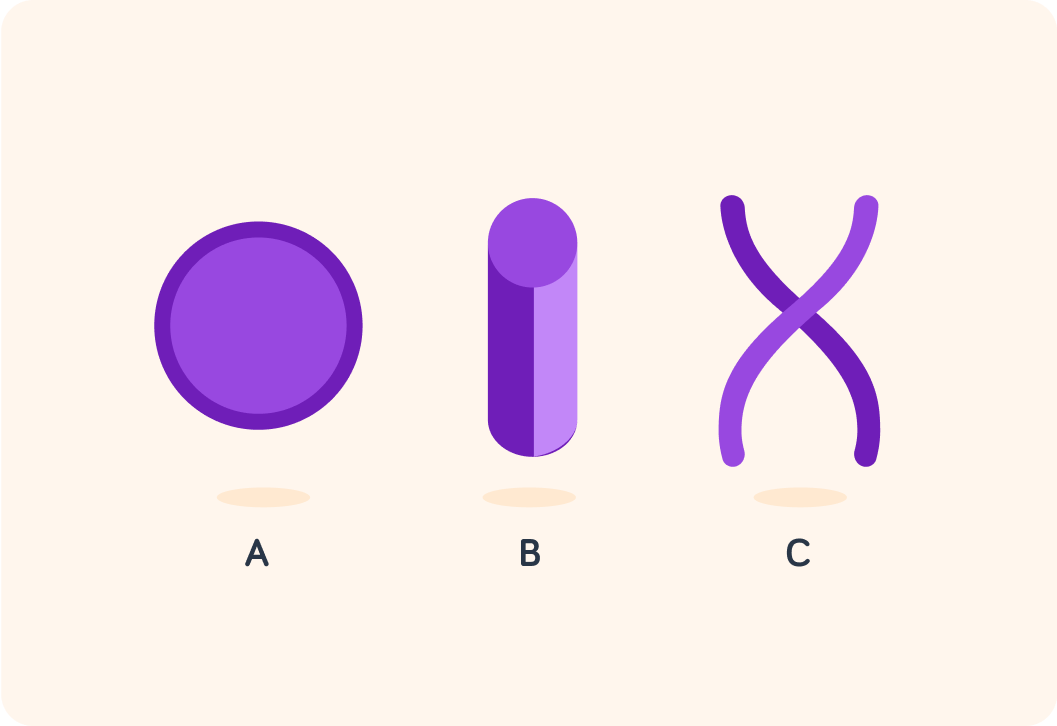YOU ARE LEARNING:
The Structure of DNA

The Structure of DNA
DNA is a polymer of two strands that coil to form a double helix structure, linked by complementary bases.
What do you think the term DNA stands for? If necessary, just have a guess!

DNA is a polymer made up from three separate components, which we will discuss later.
Take a look at this image of DNA. How many strands of DNA do you think there are?


DNA is often described as helical. What do you think helical means?

Imagine unwinding the double helix and slicing it down the middle. That would give us something like this image. It is a close up of one DNA strand.
It is made up of alternating phosphate and sugar sections, with a base attached to the sugar. The second DNA strand is attached to this strand by a bond between the bases.

Take a guess as to which of these is the phosphate group. Answer A, B or C.


The bases are what hold the two DNA strands together, so they are the inner section of the strand. What is the molecule in the middle called?


So phosphate at the edge, base towards the other strand in the DNA double helix and sugar in-between phosphate and base.
That's how a stand of DNA is structured.

The four bases that make up DNA are Adenine, Thymine, Guanine and Cytosine. These are often abbreviated to A, T, G and C, but it is important to know their full names too.
Each base only pairs with one specific base partner. This type of pairing has a name. What do you think it is?

In DNA, the bonds are between the bases Adenine-Thymine (AT) and Cytosine-Guanine (CG). One way to remember this that one bonding makes a word ('AT') and the letters C and G look similar, so they make a pair.
What other base does adenine bond with?

What other base does guanine bond with?

A nucleotide is a building block of DNA that helps to make up one chain, or strand of DNA. A nucleotide has 3 parts to it. Please select the three components you think make up a nucleotide.

You can select multiple answers
Take a look at this image of a double helix DNA. The bases are where the two opposite strands of DNA meet, but there is a bit of "glue" between the bases as well. This glue is made up of hydrogen bonds.
Hydrogen bonds are weak intermolecular forces.

What do you get if you connect many nucleotides?

In the next question, order the components of DNA as they would be on a strand of DNA from left to right.
What do you think a chromosome is?

Every chromosome comes in a pair. We have over 40 individual chromosomes that join in pairs. So how many chromosome pairs might this make?

Think back to the last question talking about chromosome pairs. Which of these do you think is a typical chromosome shape? A, B or C?


